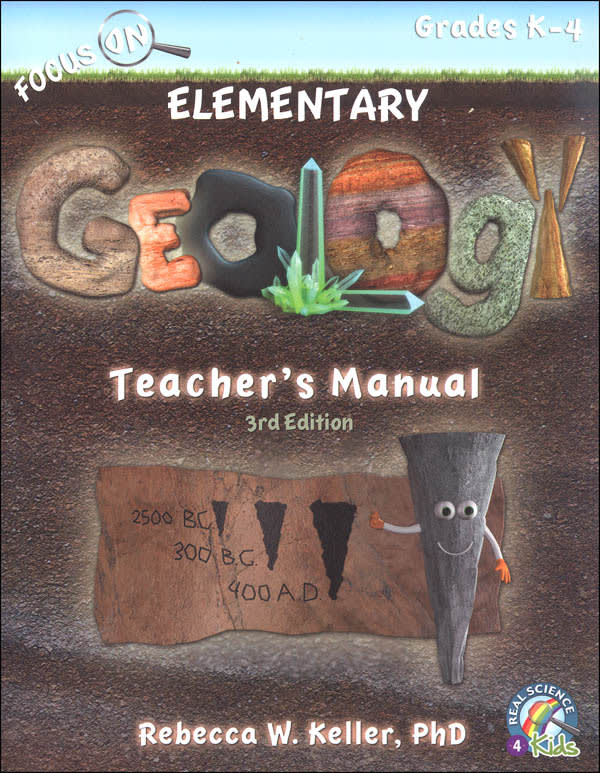- Bargain Items are brand-new products that have been dinged, dented, or scuffed, but are otherwise in usable condition.
- Bargain Items have limited inventory, and they are only reserved for you when checkout is completed.
- Bargain Items are non-returnable and non-refundable.
Focus On Elementary Geology Teacher's Manual (3rd Edition)
Description
The Focus On Elementary Geology Teachers Manual, 3rd Edition accompanies the Focus On Elementary Geology Student Textbook and Laboratory Notebook, 3rd Edition. The Teachers Manual includes guides and instructions for the hands-on experiments in the Laboratory Notebook, objectives for each experiment, suggested questions to guide open inquiry, and complete materials lists for the experiments.
The Focus On Elementary Geology Teachers Manual, 3rd Edition contains 12 black and white chapters. Grades K-4.
54 pages.
Twelve chapters covering the history of geology and modern geology, the tools of geology, rocks and minerals, dirt, characteristics and layers of earth, volcanoes, earthquakes, Geosphere, Atmosphere, Hydrosphere and the water cycle, Biosphere, earth cycles and the sun, Magnetosphere and the earth's balance. Lab activities use easily found items such as dirt, mud, clay, iron filings, magnets, hammers, pebbles, seeds, etc. Contact us for full listing.
| Product Format: | Paperback |
|---|---|
| Grades: | K-4 |
| Brand: | Gravitas Publications |
| Author: | Rebecca Keller |
| ISBN: | 9781941181416 |
| Length in Inches: | 11 |
| Width in Inches: | 8.5 |
| Height in Inches: | 0.125 |
| Weight in Pounds: | 0.45 |


